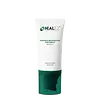What's inside
What's inside
 Key Ingredients
Key Ingredients

 Benefits
Benefits

 Concerns
Concerns

 Ingredients Side-by-side
Ingredients Side-by-side

Dibutyl Adipate
EmollientTriethylhexanoin
MaskingZinc Oxide
Cosmetic ColorantCaprylic Acid
CleansingPhenylbenzimidazole Sulfonic Acid
UV AbsorberGlycerin
HumectantDiethylamino Hydroxybenzoyl Hexyl Benzoate
UV FilterDiethylhexyl Butamido Triazone
UV AbsorberMethylene Bis-Benzotriazolyl Tetramethylbutylphenol
UV FilterTriethanolamine
BufferingDisteardimonium Hectorite
StabilisingInositol
HumectantTocopheryl Acetate
AntioxidantAvena Sativa Seed Extract
Skin ConditioningBisabolol
MaskingPropylene Carbonate
SolventCamellia Sinensis Leaf Extract
AntimicrobialPhenoxyethanol
PreservativeCellulose
AbsorbentDecyl Glucoside
CleansingPropylene Glycol
HumectantXanthan Gum
EmulsifyingEthylhexylglycerin
Skin ConditioningDibutyl Adipate, Triethylhexanoin, Zinc Oxide, Caprylic Acid, Phenylbenzimidazole Sulfonic Acid, Glycerin, Diethylamino Hydroxybenzoyl Hexyl Benzoate, Diethylhexyl Butamido Triazone, Methylene Bis-Benzotriazolyl Tetramethylbutylphenol, Triethanolamine, Disteardimonium Hectorite, Inositol, Tocopheryl Acetate, Avena Sativa Seed Extract, Bisabolol, Propylene Carbonate, Camellia Sinensis Leaf Extract, Phenoxyethanol, Cellulose, Decyl Glucoside, Propylene Glycol, Xanthan Gum, Ethylhexylglycerin
Water
Skin ConditioningNiacinamide
SmoothingDipropylene Glycol
HumectantDibutyl Adipate
EmollientPolymethylsilsesquioxane
Phenethyl Benzoate
EmollientTitanium Dioxide
Cosmetic ColorantIsononyl Isononanoate
EmollientDiethylamino Hydroxybenzoyl Hexyl Benzoate
UV FilterSilica
AbrasiveCoco-Caprylate/Caprate
EmollientGlycerin
HumectantGlyceryl Glucoside
HumectantMethyl Methacrylate Crosspolymer
Bis-Ethylhexyloxyphenol Methoxyphenyl Triazine
Skin ConditioningEthylhexyl Triazone
UV AbsorberPolysilicone-15
UV FilterTerephthalylidene Dicamphor Sulfonic Acid
UV Absorber1,2-Hexanediol
Skin ConditioningBehenyl Alcohol
EmollientPotassium Cetyl Phosphate
EmulsifyingPolyglyceryl-3 Methylglucose Distearate
EmulsifyingPoly C10-30 Alkyl Acrylate
Emulsion StabilisingPolyhydroxystearic Acid
EmulsifyingSodium Polyacryloyldimethyl Taurate
Emulsion StabilisingTromethamine
BufferingSodium Acrylates Crosspolymer-2
AbsorbentHydroxyethyl Acrylate/Sodium Acryloyldimethyl Taurate Copolymer
Emulsion StabilisingPolyacrylate Crosspolymer-6
Emulsion StabilisingMalt Extract
Skin ProtectingAluminum Hydroxide
EmollientCaprylic/Capric Triglyceride
MaskingHydroxyacetophenone
AntioxidantStearic Acid
CleansingHydrogenated Lecithin
EmulsifyingPolyglyceryl-2 Dipolyhydroxystearate
Skin ConditioningCeramide NP
Skin ConditioningDisodium EDTA
T-Butyl Alcohol
PerfumingCaprylyl Glycol
EmollientEthylhexylglycerin
Skin ConditioningLauric Acid
CleansingButylene Glycol
HumectantCetearyl Alcohol
EmollientPalmitic Acid
EmollientCeteareth-25
CleansingCetyl Alcohol
EmollientMyristic Acid
CleansingCholesterol
EmollientCeramide Ns
Skin ConditioningBehenic Acid
CleansingArtemisia Princeps Leaf Extract
Skin ConditioningXanthium Strumarium Fruit Extract
Skin ConditioningPrunella Vulgaris Flower/Leaf/Stem Extract
Skin ProtectingCeramide AP
Skin ConditioningPhytosphingosine
Skin ConditioningCetraria Islandica Extract
CleansingCeramide EOP
Skin ConditioningOleanolic Acid
Skin ConditioningCeramide As
Skin ConditioningCeramide Eos
Skin ConditioningCeramide Ng
Skin ConditioningCaprooyl Phytosphingosine
Skin ConditioningCaprooyl Sphingosine
Skin ConditioningCI 19140
Cosmetic ColorantCI 16255
Cosmetic ColorantWater, Niacinamide, Dipropylene Glycol, Dibutyl Adipate, Polymethylsilsesquioxane, Phenethyl Benzoate, Titanium Dioxide, Isononyl Isononanoate, Diethylamino Hydroxybenzoyl Hexyl Benzoate, Silica, Coco-Caprylate/Caprate, Glycerin, Glyceryl Glucoside, Methyl Methacrylate Crosspolymer, Bis-Ethylhexyloxyphenol Methoxyphenyl Triazine, Ethylhexyl Triazone, Polysilicone-15, Terephthalylidene Dicamphor Sulfonic Acid, 1,2-Hexanediol, Behenyl Alcohol, Potassium Cetyl Phosphate, Polyglyceryl-3 Methylglucose Distearate, Poly C10-30 Alkyl Acrylate, Polyhydroxystearic Acid, Sodium Polyacryloyldimethyl Taurate, Tromethamine, Sodium Acrylates Crosspolymer-2, Hydroxyethyl Acrylate/Sodium Acryloyldimethyl Taurate Copolymer, Polyacrylate Crosspolymer-6, Malt Extract, Aluminum Hydroxide, Caprylic/Capric Triglyceride, Hydroxyacetophenone, Stearic Acid, Hydrogenated Lecithin, Polyglyceryl-2 Dipolyhydroxystearate, Ceramide NP, Disodium EDTA, T-Butyl Alcohol, Caprylyl Glycol, Ethylhexylglycerin, Lauric Acid, Butylene Glycol, Cetearyl Alcohol, Palmitic Acid, Ceteareth-25, Cetyl Alcohol, Myristic Acid, Cholesterol, Ceramide Ns, Behenic Acid, Artemisia Princeps Leaf Extract, Xanthium Strumarium Fruit Extract, Prunella Vulgaris Flower/Leaf/Stem Extract, Ceramide AP, Phytosphingosine, Cetraria Islandica Extract, Ceramide EOP, Oleanolic Acid, Ceramide As, Ceramide Eos, Ceramide Ng, Caprooyl Phytosphingosine, Caprooyl Sphingosine, CI 19140, CI 16255
 Reviews
Reviews

Ingredients Explained
These ingredients are found in both products.
Ingredients higher up in an ingredient list are typically present in a larger amount.
Dibutyl Adipate is an emollient and solvent. It is created from butyl alcohol and adipic acid.
As a solvent, Dibutyl Adipate helps mix and disperse ingredients evenly.
Dibutyl Adipate is soluble in water and organic solvents. It does not absorb UV rays.
Learn more about Dibutyl AdipateDiethylamino Hydroxybenzoyl Hexyl Benzoate (DHHB) is a chemical UV-A absorber. It is formulated for high UVA protection (320-400 nm).
DHHB is well-liked for:
DHHB has been approved by the EU, Japan, Taiwan, and South America for use up to 10%. Unfortunately, it has not been approved for use in the US or Canada due to slow regulatory processes.
This ingredient is soluble in oils, fats, and lipids.
Learn more about Diethylamino Hydroxybenzoyl Hexyl BenzoateEthylhexylglycerin (we can't pronounce this either) is commonly used as a preservative and skin softener. It is derived from glyceryl.
You might see Ethylhexylglycerin often paired with other preservatives such as phenoxyethanol. Ethylhexylglycerin has been found to increase the effectiveness of these other preservatives.
Glycerin is already naturally found in your skin. It helps moisturize and protect your skin.
A study from 2016 found glycerin to be more effective as a humectant than AHAs and hyaluronic acid.
As a humectant, it helps the skin stay hydrated by pulling moisture to your skin. The low molecular weight of glycerin allows it to pull moisture into the deeper layers of your skin.
Hydrated skin improves your skin barrier; Your skin barrier helps protect against irritants and bacteria.
Glycerin has also been found to have antimicrobial and antiviral properties. Due to these properties, glycerin is often used in wound and burn treatments.
In cosmetics, glycerin is usually derived from plants such as soybean or palm. However, it can also be sourced from animals, such as tallow or animal fat.
This ingredient is organic, colorless, odorless, and non-toxic.
Glycerin is the name for this ingredient in American English. British English uses Glycerol/Glycerine.
Learn more about Glycerin